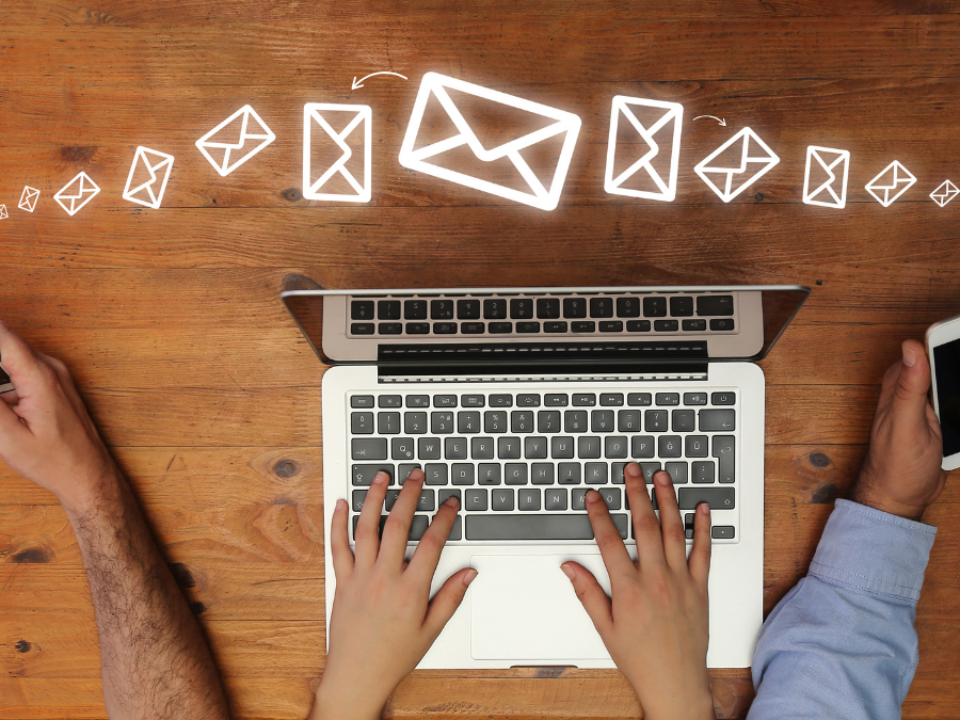Why Email Is The Nucleus Of Your Omnichannel Marketing Strategy
Email marketing has come a long way from its humble beginnings as a siloed, one-size-fits-all broadcast channel. In 2025, email is not just another tool in the box, it’s the nucleus around which all your marketing efforts revolve.
Here’s why email remains the beating heart of modern marketing, powering everything from personalisation to omnichannel engagement and data-driven strategies.

From siloed broadcasts to lifecycle marketing
Not long ago, email marketing was synonymous with “batch and blast” - essentially the same message sent to everyone, regardless of their interests or where they were in the customer journey. This approach was simple but wasteful - if you don’t have a baby, you’re unlikely to want to know about nappies from your supermarket. Today, that’s changed dramatically.
The rise of lifecycle email marketing means brands now connect with customers at every stage - from awareness and engagement to conversion, retention, and loyalty. Rather than treating everyone the same, marketers use data and automation to send the right message at the right time, nurturing relationships and maximising customer value. This shift is powered by sophisticated segmentation, behavioural triggers, and dynamic content, ensuring every communication is relevant and timely.
The technical evolution: ESPs become cloud and experience platforms
Traditional Email Service Providers (ESPs) have evolved into Cloud Experience Marketing Platforms and Customer Engagement Platforms (CEPs). These platforms are no longer limited to email - they orchestrate customer journeys across email, SMS, push notifications, in-app messaging, and even direct mail, all from a single hub.
Modern CEPs (often in collaboration with other platforms) help centralise customer data, manage consent, and resolve identities, enabling marketers to:
- Personalise at scale using real-time data
- Automate campaigns across multiple channels
- Trigger communications based on customer behaviour and lifecycle stage
- Integrate seamlessly with CRM, e-commerce, and analytics tools
This omnichannel approach ensures a consistent, joined-up experience wherever your customers interact with your brand.
Why email Is still at the forefront
Despite being one of the oldest digital marketing technologies, email is more vital than ever. Here’s why it remains at the centre of your marketing ecosystem:
1. The Universal Unique Identifier
Your customer’s email address is often the single, persistent identifier that follows them across devices, channels, and even offline experiences. While cookies and device IDs are increasingly limited by privacy laws and browser restrictions, the email address remains a reliable anchor for identity resolution in your CRM or Customer Data Platform (CDP).
In physical retail, brands like Nike or Diesel routinely ask for your email at the till, linking in-store visits to your digital profile and enabling true omnichannel marketing.
Online, your email connects purchases, support interactions, and website behaviour, building a unified customer profile.
2. Powering More Than Just Email
Once you have a customer’s email address (with consent), it unlocks far more than just inbox communications:
Ad Targeting: Platforms like Meta (Facebook/Instagram) and Google allow you to upload email lists for custom audience targeting. This means you can serve ads to your existing customers or lookalikes. As privacy regulations tighten, the value of this “zero-party” and first-party data skyrockets with consent.
Cross-Channel Personalisation: The data tied to your Email addresses enables personalisation across SMS, websites, online ads, push notifications, and even direct mail, ensuring your messaging is consistent and relevant everywhere your customer interacts with your brand.
Authentication & Security: Email is often used for account logins, password resets, and 2FA, making it critical for customer trust and security.
3. Data-Driven, Privacy-First Marketing
Modern email marketing is built on permission and value exchange. Customers willingly share their email addresses in return for relevant content, offers, and experiences - making this data highly accurate and actionable. With GDPR and other privacy laws, consent management and data protection are core to any email strategy, further increasing trust.
4. The Central Identifier for CRM and CDP
In your CRM or CDP, the email address ties together everything you know about a customer—purchases, preferences, engagement, support tickets, and more. This "single customer view" enables:
- Hyper-personalised campaigns
- Accurate segmentation and targeting
- Measurement of lifetime value and channel attribution
Even as customers change devices or channels, their email address (often alongside a mobile number) is the thread that keeps their profile intact.
Email: the beating heart of modern marketing
Email’s enduring power lies in its adaptability, ubiquity, and central role in identity. Far from being a relic, it’s the foundation for personalisation, omnichannel engagement, and data-driven strategy in the privacy-first era. As ESPs evolve into CEPs and marketing clouds, email remains the connective tissue - linking online and offline, digital and physical, owned and paid channels.
In short, if you want to future-proof your marketing, start with the nucleus: your email strategy. Everything else - ads, SMS, push, personalisation, loyalty - radiates from there.
Ready to put email at the centre of your marketing?
Let’s talk about how Jarrang can help you unlock its full potential and join up your channels.
Subscribe to our insights newsletter
Be the first to know what's trending in email and CRM.
Share this story
Related insights

Article 5 min read

